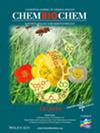Chemoenzymatic Route toward a De Novo Enantioselective Total Synthesis of (S)-Baclofen Based on Metal-Catalyzed Hydroformylation and Enzymatic Transamination.
IF 2.6
4区 生物学
Q3 BIOCHEMISTRY & MOLECULAR BIOLOGY
引用次数: 0
Abstract
This study explores the chemoenzymatic synthesis of (S)-baclofen, which involves a sequential combination of transition metal catalysis and biocatalysis. The synthesis approach starts from a readily accessible cinnamic acid ester that is converted using a rhodium-based hydroformylation catalyst toward the corresponding chiral aldehyde. This compound is subsequently converted via a transaminase-catalyzed reaction system that yields the desired β-chiral amino acid ester and the final free β-chiral amino acid (S)-baclofen after a simple hydrolysis reaction. This synthesis concept does provide high atom efficiency and does not require an additional chiral resolution step of a racemic product.
基于金属催化氢甲酰化和酶转氨化的(S)-巴氯芬从头对映选择性全合成的化学酶途径。
本研究探索了(S)-巴氯芬的化学酶法合成,涉及过渡金属催化和生物催化的顺序结合。合成方法从一种容易获得的肉桂酸酯开始,使用铑基氢甲酰化催化剂将其转化为相应的手性醛。该化合物随后通过转氨酶催化的反应体系转化,经过简单的水解反应,生成所需的β-手性氨基酸酯和最终游离的β-手性氨基酸(S)-巴氯芬。这种合成概念确实提供了高原子效率,并且不需要对外消旋产物进行额外的手性拆分步骤。
本文章由计算机程序翻译,如有差异,请以英文原文为准。
求助全文
约1分钟内获得全文
求助全文
来源期刊

ChemBioChem
生物-生化与分子生物学
CiteScore
6.10
自引率
3.10%
发文量
407
审稿时长
1 months
期刊介绍:
ChemBioChem (Impact Factor 2018: 2.641) publishes important breakthroughs across all areas at the interface of chemistry and biology, including the fields of chemical biology, bioorganic chemistry, bioinorganic chemistry, synthetic biology, biocatalysis, bionanotechnology, and biomaterials. It is published on behalf of Chemistry Europe, an association of 16 European chemical societies, and supported by the Asian Chemical Editorial Society (ACES).
 求助内容:
求助内容: 应助结果提醒方式:
应助结果提醒方式:


